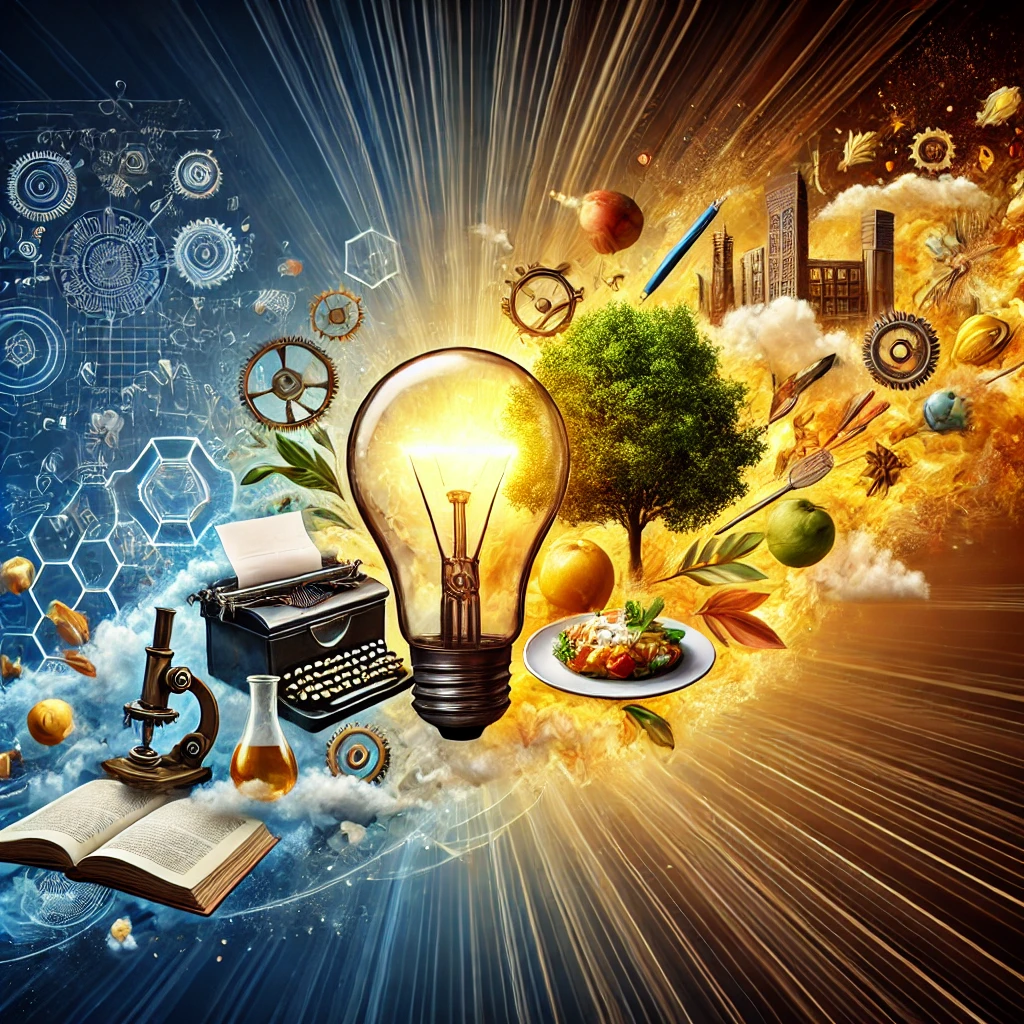The word “creativity” usually brings up images of artists. A less creative artist might paint a still life similar to previous artists, but a more creative artist might paint a still life with more novel features. Seen in this way, creativity is an abstract quality of the art, a slider that you can tune up and down like saturation without broader impacts.

However, there’s another aspect of creativity that is very physical and generative. Human creativity can literally create more stuff — generate things out of thin air. Not in the sense of violating conservation of mass, but in the sense of creating new things that humans value. Creativity literally generates new value.
Examples of Creativity Generating Value
Take a microscale, everyday example. Suppose my wife and I are trying to decide on the best restaurant for a date night. My wife like Italian food and so suggests a casual Italian place. I like haute-cuisine and suggest the high-end sushi place in town. It looks like we’re in a tradeoff situation. But then a friend creatively suggests the new Michelin 3-star Italian restaurant. Now we can both get what we want — my friend’s creative idea literally generated value.
A medium-scale business example might be deciding what marketing to do for your new startup. You can devote $10,000 to content marketing, or $10,000 to influencer marketing. Instead of taking these two choices as given, you can create a new one: try spending $100 in each, and see which one goes further. Then spend the remaining $9,800 on the better one!
Take a macro-scale, historic, and physical example. At the end of the 20th century, agriculture was running out of fertilizer, especially ammonia, which was previously collected from sources like bird feces. Ammonia became known as the gold of nitrates, and entire wars were fought over natural deposits of it. Then Fritz Haber cam along and invented the Haber process — a method of creating previously precious ammonia from abundant nitrogen in the air. This mental creativity resulted in a new physical process, and literal metric tons of more fertilizers and food for people.
In this sense, creativity is alchemy. It allows mere ideas to manifest itself as more stuff, more items of value, and often more physical items.
Blockers to Creativity Generating Value
This alchemy though is sometimes hidden through through a zero-sum or tradeoff mentality. This hiding occurs in two ways.
First, a zero-sum mentality can be a sleight of hand to prevent us from looking at creative solutions to begin with. In the first example of the date night restaurant, one might start thinking about fairness, or who got their choice of restaurants the last time. This framing already forces the mind to accept that we’re working within the confines of the tradeoff.
A zero-sum mentality is often the one taught in schools as well. In school, if you rank higher, your classmate ranks lower. You’re often given math problems like if train A is going at X speed, when will it collide with train B — there’s no sense in thinking of whether train A and B need to collide at all.
Second, a zero-sum mentality lets naysayers deny that creativity created any value at all. In the restaurant example, a naysayer might explain that our third restaurant was always in the solution space to being with. The “proper framing” would have included every restaurant in our city, and it would have been clear the third restaurant was the best, and so the creativity played no important role at all.
In the Haber example the naysayer might explain, well, the Haber process doesn’t violation the conservation of mass. Yes, there is a lot more ammonia in the world now, but the total amount of nitrogen atoms and hydrogen atoms are the same, so what good was the creativity? Is more food good at all? Are more humans good at all? Is a car truly better than iron ore stuck in the ground? The limit case of this can be called “conservation-law nihilism” and in such a philosophy, no humans or processes can ever create “new stuff”, which seems like an uninteresting definition of “new stuff” for this article, so I’ll rule it out. Having done so, it’s clear that people can create new physical stuff, and creativity helps humans create new physical stuff.
Ways to Apply this to Life
This results in a correspondence between creating things in your mind, and creating things in physical reality. If you want more stuff personally, and if you want human society to have more stuff generally, this suggests applied creativity. Personally, I’ve had some success in its application, and a description of the process might be:
For a decision you’re trying to make, list your current options. Then list your major values / goals you’re trying to accomplish. Then brainstorm a ton of more options around your major values. Finally choose the option that maximizes your goals. If you’re anything like me, at least 10% of the time, you’ll find that one of the “crazy ideas” you brainstormed is the clear right solution that creates 3x as much value as the options to had to begin with. This extra value was essentially created from thin air.
For society at large, a similar algorithm can work, but since the stakes are a lot larger, it likely would take more effort, more creativity, more background research, and more friends to help you along the journey. But the final impact of your creation will be that much larger.